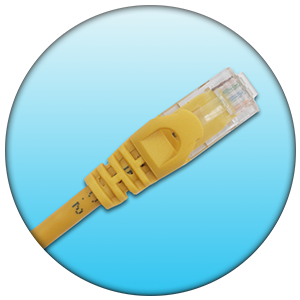Cable & Wire | High quality and excellent service at reasonable prices.
info@zion-communication.com
Cat 6 (Category 6) is a cable standard used mainly for Ethernet computer networking, security systems, and telephone services. Cat 6 cable is backward compatible with the Cat 5E, Category 6 cable is capable of transmitting voice and data up to 155 Mbps (mega bits per second), with possible transmission frequencies up to 550 MHz.

Cat 6 carries Ethernet 10Base-T, 100Base-TX, and 1000Base-T (Gigabit Ethernet) connections. Cat 6 cable is backed with more stringent specifications for crosstalk and system noise than earlier cabling standards.<o:p>
Category 6 cables come with four twisted copper wire pairs and each twisted pair is built of larger 23 gauge copper. The earlier model, Category 5, used 24 gauge copper wires. In wire gauges, a larger number indicates a smaller wire.
Cat 6 cables are generally terminated with RJ-45 electrical connectors. The signal path’s performance will be limited to that of the lowest category if components of the various cable standards are intermixed. The maximum length of one Cat 6 cable segment is 220 meters. A repeater needs to be installed to send data over longer distances or data loss may occur.
In the US, the National Fire Protection Association (NFPA) plays an important role in standards because it publishes the National Electrical Code (NEC). This document regulates the installation of electric wiring and equipment and should definitely be considered before starting a project.
ASTM International and Underwriters Laboratories (UL) also design tests and standards for a wide variety of wire and cable, including those used for fire alarm and security applications. In Canada, CSA International does work similar to the UL in the United States and can help assure compliance with the Canadian Electrical Code.
There are many safety precautions such as voltage, abrasion resistance, chemical resistance, etc., that should be considered in choosing any kind of electrical cable, including that for fire alarms. However, there are some notable fire-related safety precautions to consider as well. First is the fire resistance of the cable – will it burn and/or how long will it burn? Another is smoke propagation -- how much will it give off if it comes in contact with fire? These considerations should be made when choosing any type of electrical cable, but they are especially important in the case of fire alarm cable which must function in emergency situations and under extreme conditions.
Most safety concerns (including these fire-related ones) are regulated by the UL, NEC, and other standards organizations and guidelines. The NEC outlines acceptable limits for burning and smoke emissions while the UL and other organizations are responsible for the development of various flame tests cables must pass in order to be considered safe for use.
